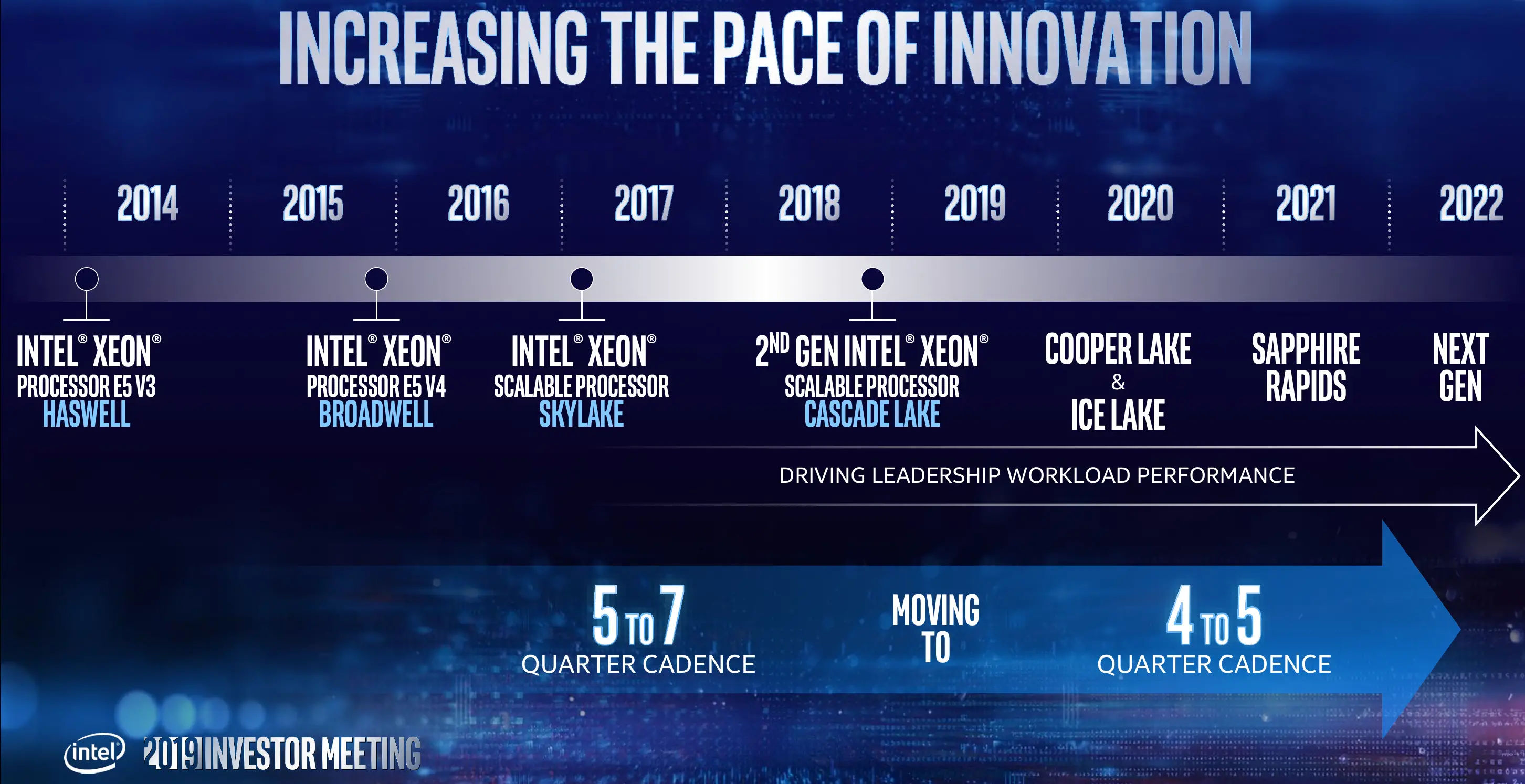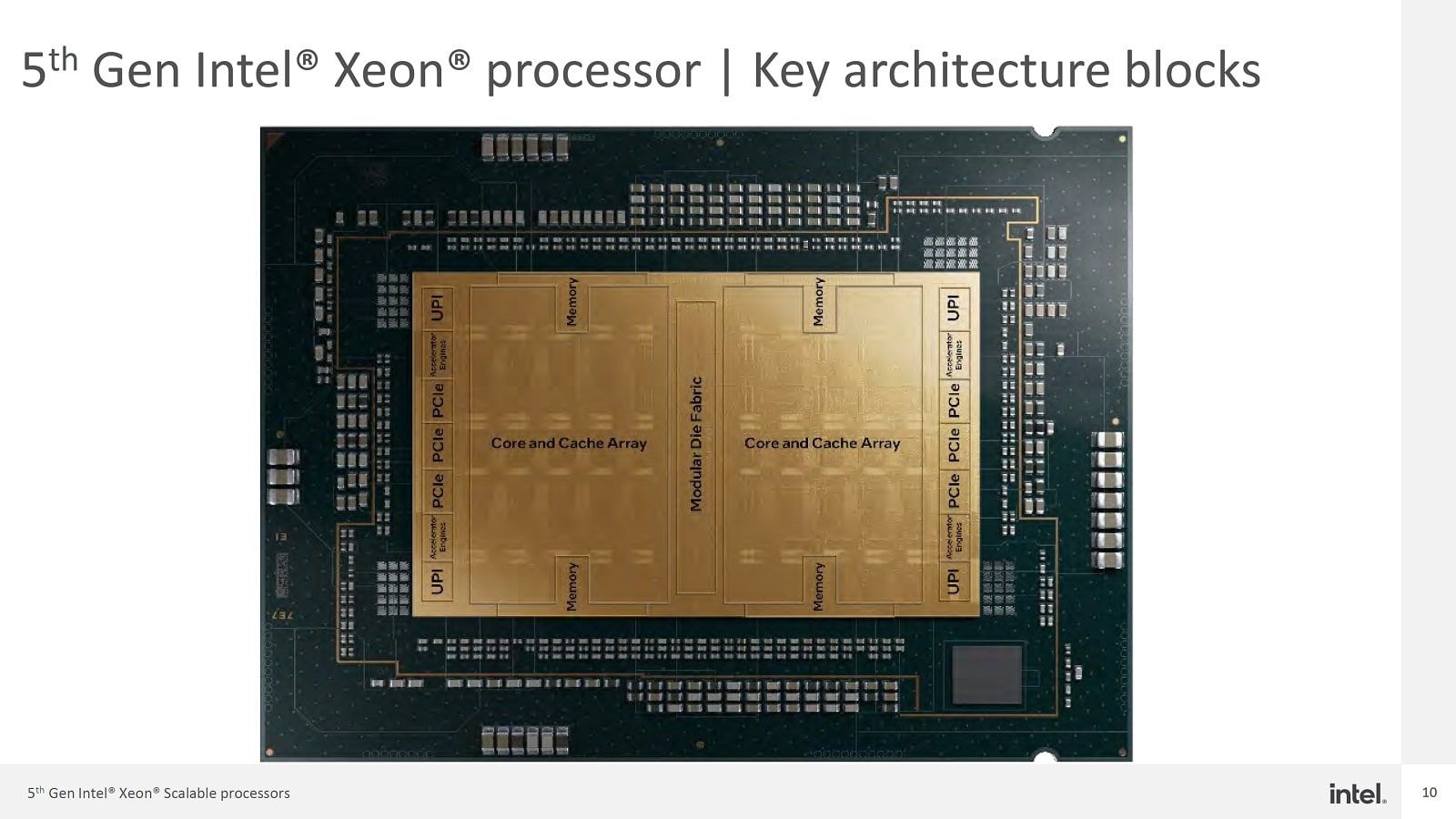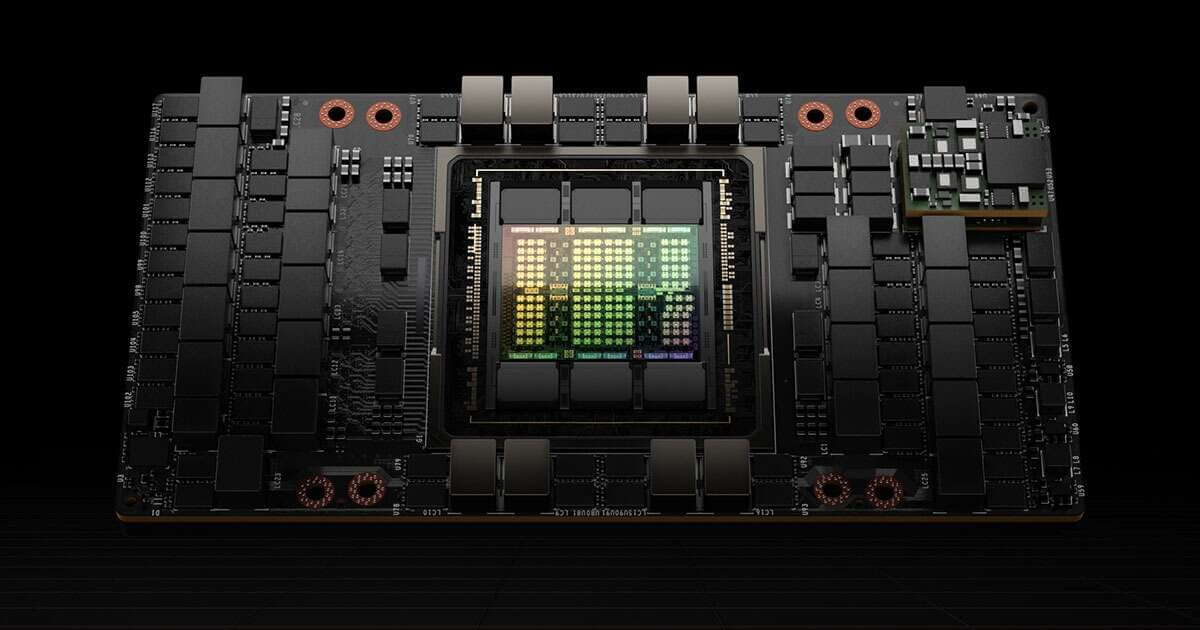In 2023, Intel released two generations of Xeon processors, Sapphire Rapids-SP and Emerald Rapids-SP, in January and December respectively. Sapphire Rapids-SP was originally scheduled to launch in 2021 but got delayed three times, eventually launching in Q1 2023. The succeeding 5th Gen Xeon Emerald Rapids family was set to land in 2022 but ended up in Q4 2023. Emerald Rapids-SP is identical to Sapphire on paper, but it leverages two compute dies much more densely packed to accommodate the increased SRAM. It also features a set of accelerators that boost AI, HPC, networking, and data transfer performance by up to 70%. Intel is banking on the 5th Gen’s platform advantage. Unlike its predecessor, it’s a drop-in upgrade for the existing Eagle Stream platform adopters, minimizing verification/validation delays. The 6th Gen Xeon family will consist of the cloud-centric Sierra Forest and Granite Rapids. These chips will leverage the LGA7529 socket, utilizing a common I/O die for easy interoperability and flexibility. Sierra is expected to launch in mid-2024, followed by Granite in late 2024. Intel maintains platform extensibility. Whether it is a software manufacturer or an all-in-one computer provider, upgrading to the fifth generation Intel Xeon Scalable Processing will be very fast because the entire platform verification and software verification have been completed.

Sapphire Rapids was (originally) scheduled to launch in 2021 but got delayed three times, eventually launching in Q1 2023. The succeeding 5th Gen Xeon Emerald Rapids family was set to land in 2022 but ended up in Q4 2023. Pessimism aside, Intel does seem to be back on track, with the 6th Gen Xeon processors set to launch this year.
You may question Emerald Rapids’ validity as a full-fledged generational upgrade. Like the 14th Gen Raptor Lake Refresh, it leverages the Raptor Cove cores, best described as Golden Cove with more cache. We see a marginal increase in core count from 60 to 64, contrasted by a massive uplift in the L3 cache from 112.5MB to 320MB.
Large models are memory bandwidth-intensive and memory capacity-intensive, and sometimes their compute requirement is not very high. For processors, we still need to pay due attention to the memory bandwidth needs. We see that the fifth-generation Xeon has increased memory bandwidth and cache, which will benefit generative AI in the future. “
Ali Wang Wei, senior director of the Cloud Server R&D Division
Apart from these two changes, Emerald Rapids is identical to Sapphire on paper. However, there’s more to it. It leverages two compute dies (vs. four on SPR) much more densely packed to accommodate the increased SRAM. It also features a set of accelerators that boost AI, HPC, networking, and data transfer performance by up to 70%.

Intel’s engineers and executives are prioritizing the lucrative generative AI market. Unlike traditional data center workloads, these models are bandwidth-intensive rather than compute-hungry. The increase in Emerald Rapids’ L3 cache can be seen as a direct response.
Intel is banking on the 5th Gen’s platform advantage. Unlike its predecessor, it’s a drop-in upgrade for the existing Eagle Stream platform adopters, minimizing verification/validation delays. The 6th Gen Xeon family will consist of the cloud-centric Sierra Forest and Granite Rapids. These chips will leverage the LGA7529 socket, utilizing a common I/O die for easy interoperability and flexibility. Sierra is expected to launch in mid-2024, followed by Granite in late 2024.
We maintain platform extensibility. Whether it is a software manufacturer or an all-in-one computer provider, upgrading to the fifth generation Intel Xeon Scalable Processing will be very fast because the entire platform verification and software verification have been completed.
Chen BAOLI, VP of Data Center Group and GM of INTEL China
Via: Mydrivers.




Comments ()